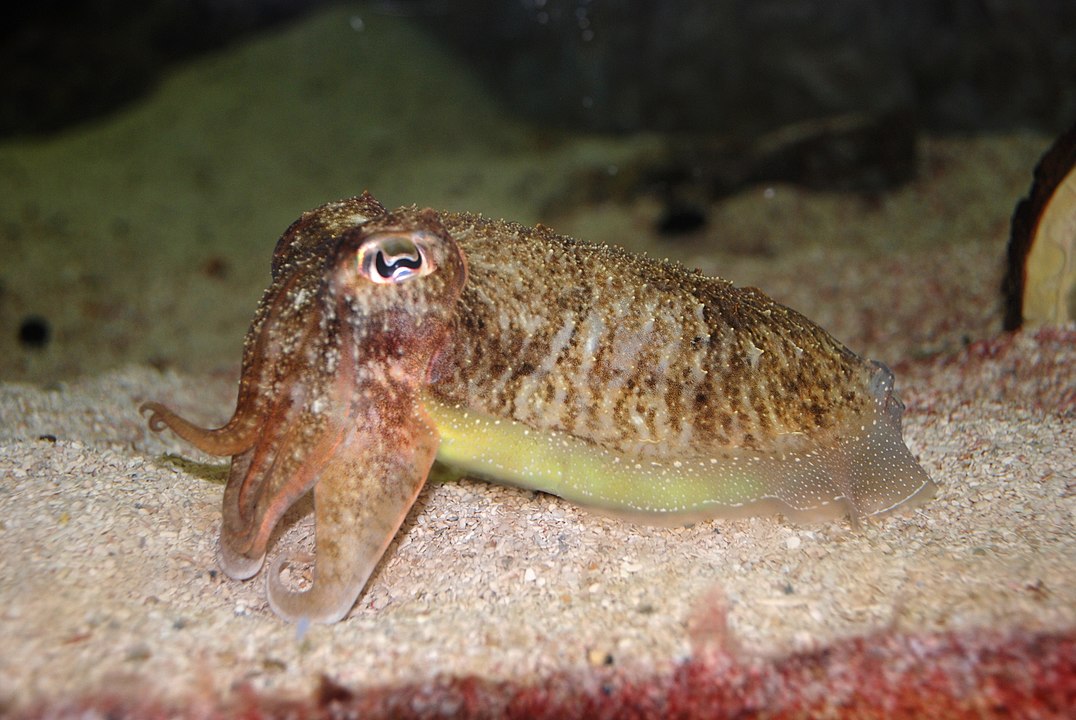Common cuttlefish (Sepia officinalis)
While working in the lab, behavioural ecologist dr. Alex Schnell noticed a curious behaviour of Franklin, one of the cuttlefish. In the morning when Alex would enter the lab to start experiments, Franklin would drench her with water she ejected through her syphon. However, in the evening when Alex would come to the lab to feed the cuttlefish, Franklin would not “attack” her. Alex started wondering whether this behaviour was a sign of simple associative learning of mornings with experiments that the animal didn’t like and evenings with a meal. Or maybe it showed something more: self-control and resistance of the temptation to drench the scientist in the evening.
Franklin inspired Alex Schnell and her colleagues to test whether cuttlefish can show self-control.
Marshmallow test for children
In children self-control (the ability to delay gratification) can be tested using the so-called marshmallow test. A child is seated in a room with just a table and a chair. In front of them the experimenter leaves a marshmallow (or another treat) and tells them that they can eat it straight away or wait for a while when an experimenter leaves the room. They are told that if they wait, they will get another treat later. In the original test children waited on average 3 min before they ate the treat, but self-control increases with age.
… and for cuttlefish
Although one can’t just tell cuttlefish to wait, the researcher devised an experiment that could test for self-control in these animals. First*, they taught six cuttlefish that one compartment in their tank provides less-tasty food directly, while another compartment opens only after a delay, but contains their favourite food. Both compartments were transparent, so the cuttlefish could see both food items. Further, whenever the animal ate from one compartment, the other one was emptied of food.
Once the cuttlefish seemed to understand the rules, the real test started. Both compartments were placed in the tank and an individual was positioned at an equal distance to them. The delay for opening the compartment with favourite food was increased between experiment, causing some animals to give up and just eat the less-tasty prey. All cuttlefish were willing to wait at least 40s for their favourite food. However, many cuttlefish waited for more than a minute and one even two minutes – close to young children’s score. Interestingly, like children, chimpanzees, dogs and parrots, some cuttlefish seemed to try to distract themselves from the temptation of the direct reward, by turning away from the directly available food item.
Why wait?
A high degree of self-control has been shown for example in chimpanzees, corvids (birds from the crow family) and parrots. This was usually explained by the animal’s highly social lifestyle, long life and ability to use tools. After all, to keeps social bonds healthy sometimes it’s better to let others eat and delay one’s own gratification. Tool use also demands waiting for all the components to be assembled before it can be used. However, a cuttlefish lives for only two years, is not particularly social and does not use tools – so what could explain its self-control? Dr. Schnell speculates that it improves the foraging success of cuttlefish. They often lie motionless, camouflaged, on the sea bottom. Waiting for their prey to get close enough not only increases their attack success, but also reduces the chances of being seen by predators.
For a long time, people though that only humans have self-control, but this is definitely not the case; instead, it seems to be widely spread in the animal kingdom.
* Here I explained only the core of the experiment. The whole experiment was more complex and can be found in the original paper.
Polską wersję tego wpisu możesz znaleźć tutaj.
Photo: By Jarek Tuszyński / CC-BY-SA-3.0 & GDFL, CC BY-SA 3.0, https://commons.wikimedia.org/w/index.php?curid=7798599

